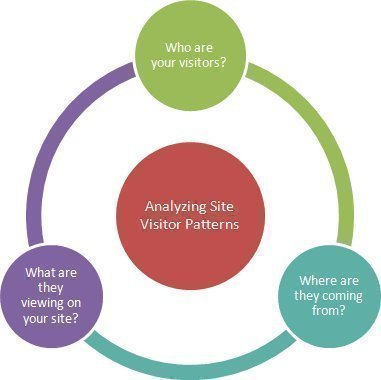How to Track Website Visitors
Web analytics is the process of quantifying the behavior of a website’s visitors. Web analytics have become a very important part of e-commerce since they can show the website owner which landing pages are effective in convincing people to subscribe to services or purchase the company’s products. Web analytics can also be used to monitor and analyze how well a website is achieving its goals.
Tracking Web Site Visitors through Logfile Analysis
Logfile analysis is an important aspect of web analytics. By using the logfile records of web servers, the popularity of a certain website can be determined. Logfile analysis of the web server can produce important marketing data such as the number of unique visitors to a site by monitoring the number of times requests to the web server are made by unique users. This proved to be a powerful tool especially when websites were only composed of a single HTML file. With the influx of multiple-paged websites, however, this tool became less useful and thus had to be upgraded with page view counts and visit counts in order to make it more effective in providing website view statistics and popularity information.
The growing popularity of search engines, however, has once again undermined the efficiency of website analytics by logfile analysis. This was mainly because logfile analysis had to distinguish between requests from individual human visitors and requests from search engine spiders and bots. The difficulty was compounded by the emergence of new Internet modifications like dynamically assigned IP addresses, web caches and web proxies. Logfile analysis managed to adapt to these new innovations somewhat by integrating analyzers to exclude cookies and spider requests.
The advantage of using this method in web analytics is that log files are more readily available than page tags; websites would need some modifications prior to collection of information via page tagging. Log files are also more accurate than page tags as they don’t require the cooperation of a visitor’s browser. Moreover, locking of page tag programs by its vendors means that website owners could not easily switch to another method in order to view the required information whereas logfiles are readily compatible with all web analytics programs.
Some examples of web analytics tools which use log file analysis include:
Tracking Web Site Visitors with Javascript
Page tagging arose as a web analytics tool primarily because of the need to solve the problem created by web caches. This method uses Java Script to inform a third-party server of a unique page request from human visitors. Web analytics companies assign the visitor a cookie to distinguish him from other visitors and to recognize him if he visits again in the future.
The advantage of using page tagging as a web analytics tool lies in the fact that it solves the web caching problem, collects more information and events than logfile analysis and is available even for companies that do not own their own web servers.
These two methods of web analytics, however, can both be provided by web analytics companies so that website owners can get the best data possible.
Here are some examples of web site tracking tools which rely on Javascript:


Comments - 5 Responses to “How to Track Website Visitors”
Sorry but comments are closed at this time.